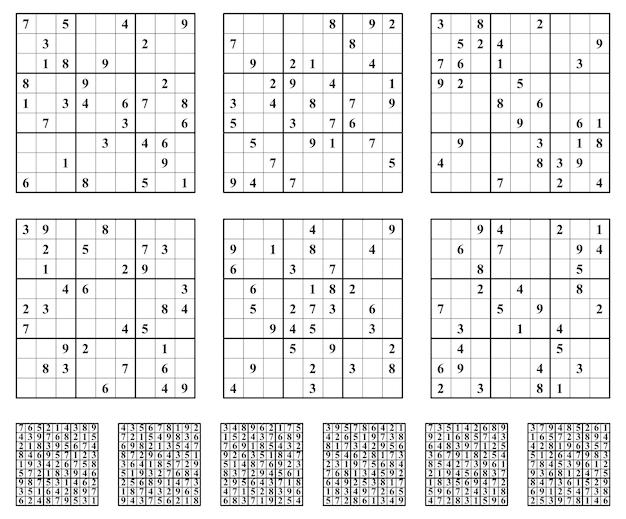It’s no secret that our world consists of a wide range of countries, each with its own unique set of characteristics and challenges. Some nations are considered developed, exhibiting high standards of living and advanced infrastructure, while others are categorized as developing, grappling with various socio-economic issues. In this blog post, we’ll delve into the main differences between developed and developing countries, answering some frequently asked questions along the way.
Have you ever wondered what sets developed countries apart from their developing counterparts? Or perhaps you’re curious about the key features that define these two categories? Join us as we explore the concept of developed and developing nations, providing insights into their economies, populations, and societal advancements. By the end of this article, you’ll have a comprehensive understanding of the factors that contribute to a country’s development status and be better equipped to comprehend the complex global landscape. So, let’s dive in!

The Main Differences Between Developed and Developing Countries
Economic Factors: The Great Divide
When it comes to the main differences between developed countries and developing countries, one of the most evident disparities lies in their economic development. Developed countries, like the United States or Germany, boast strong economies with high GDP per capita and well-established industries. On the other hand, developing countries, such as India or Kenya, face ongoing challenges in terms of economic growth, reliance on agriculture, and lower incomes.
Infrastructure: Bridges or Burdens
Another significant contrast between developed and developing nations is their infrastructure. Developed countries often have state-of-the-art transportation systems, well-maintained road networks, and efficient public services. In contrast, developing nations may struggle with poor infrastructure, inadequate healthcare facilities, and limited access to clean water and sanitation. It’s not uncommon to find potholes in their roads that could swallow a small car!
Education and Literacy Rates: Pens vs. Pickaxes
Education is a vital factor that sets developed and developing countries apart. Developed nations typically offer greater access to quality education, resulting in higher literacy rates among their populations. Citizens of these countries can often enjoy a wide range of educational opportunities, pursuing various career paths. In developing nations, education may not be as accessible, and literacy rates can be significantly lower. It’s like comparing a shiny new pen to an old rusty pickaxe!
Healthcare Systems: Pillows or Potholes
Healthcare systems serve as another significant point of contrast between developed and developing countries. Developed nations often have well-developed healthcare infrastructures, with extensive coverage, advanced medical technologies, and access to modern treatments. Meanwhile, developing countries may struggle with limited healthcare resources, underfunded hospitals, and reduced access to basic healthcare services. Unfortunately, in some developing countries, a visit to the hospital can be as uncomfortable as sleeping on a bed filled with potholes!
Social Indicators: From Bliss to Bumpy
Lastly, social indicators such as life expectancy, income inequality, and human rights play a crucial role in distinguishing developed from developing countries. Developed nations tend to have higher life expectancy rates, lower income inequalities, and stronger human rights protections. Developing nations, in contrast, often face challenges in these areas, with shorter life expectancies, higher income disparities, and more pervasive human rights issues. It’s like comparing a smooth, blissful ride to life’s bumpy roller coaster!
In conclusion, the main differences between developed and developing countries can be summarized as economic factors, infrastructure, education, healthcare systems, and social indicators. Developed countries tend to excel in these areas, providing their citizens with better opportunities and a higher quality of life. Meanwhile, developing nations continue to face numerous challenges on their path to progress. Although the disparities may be stark, it’s important for the global community to work together to bridge the gap and promote sustainable development for all.

FAQs on the Difference Between Developed and Developing Countries
What is the difference between developed and developing countries
Developed and developing countries differ in various aspects, including their levels of economic stability, technological advancement, infrastructure, healthcare, and education systems. Let’s further explore the main differences between these two categories.
How do developed nations and developing nations differ in five points
-
Economic Stability: Developed nations generally have stable and robust economies with high GDP per capita, while developing nations face economic challenges and often have lower income levels.
-
Technological Advancement: Developed countries have advanced technology and infrastructure, while developing nations may lack access to the same level of technological resources.
-
Infrastructure: Developed countries typically possess well-developed infrastructure, including transportation networks, reliable power grids, and efficient communication systems. In contrast, developing countries may struggle with inadequate infrastructure.
-
Healthcare System: Developed countries generally boast efficient healthcare systems, providing high-quality medical care and access to advanced treatments. Developing countries, on the other hand, often face challenges in delivering healthcare services to their populations.
-
Education System: Developed nations tend to have well-established education systems with accessible schooling for all. Developing countries, though making progress, may still experience limitations in educational infrastructure and access.
What are the main features of a developed and a developing country
The main features that distinguish a developed country from a developing country include:
Developed Country Features:
- Strong and stable economy
- Advanced technological infrastructure
- High standard of living
- Well-established healthcare and education systems
- Efficient public services
- Low poverty rates
Developing Country Features:
- Growing or struggling economy
- Limited access to advanced technology
- Varied standard of living
- Healthcare and education systems still developing
- Challenges in providing public services to all
- Higher poverty rates
What is the concept of a developed economy
A developed economy refers to a country that has a highly advanced and prosperous economic system. These nations typically exhibit strong industries, infrastructure, and technological advancement, resulting in high living standards for their populations.
What are the features of a developed economy
Key features of a developed economy include:
- High GDP per capita
- Technological advancement and innovation
- Strong manufacturing and service sectors
- Developed infrastructure and transport networks
- Stable financial systems
- Low unemployment rates
- High levels of healthcare and education
What is the definition of developing countries
Developing countries are characterized as nations that are in the process of improving their economic and social conditions to reach the level of developed countries. These countries typically experience challenges such as poverty, high unemployment rates, and limited access to resources and services.
What is MDC in population
MDC stands for More Developed Country. It refers to a country that has reached a high level of development, both economically and socially. MDCs are characterized by advanced infrastructure, technology, and stable economies that lead to improved living standards for their populations.
What are the features of underdeveloped countries
Underdeveloped countries typically exhibit the following features:
- Low GDP per capita
- Limited technological infrastructure
- Poor healthcare and education systems
- Inadequate transportation and communication networks
- High poverty rates
- Underdeveloped industries and agriculture
What is the best indication of a more developed society
The best indication of a more developed society is a combination of various factors, including:
- High standards of living
- Low poverty and unemployment rates
- Access to quality healthcare and education
- Developed infrastructure
- Technological advancement and innovation
- Strong economy with diverse industries
- Social equality and justice
Keep in mind that these indicators vary based on specific cultural, social, and economic contexts, and progress towards development is an ongoing process.
Now that we’ve explored the frequently asked questions about the main differences between developed and developing countries, we have a better understanding of the distinct characteristics that set them apart. As the world continues to evolve, it is important to appreciate the diversity of countries and work towards global development and equality.
